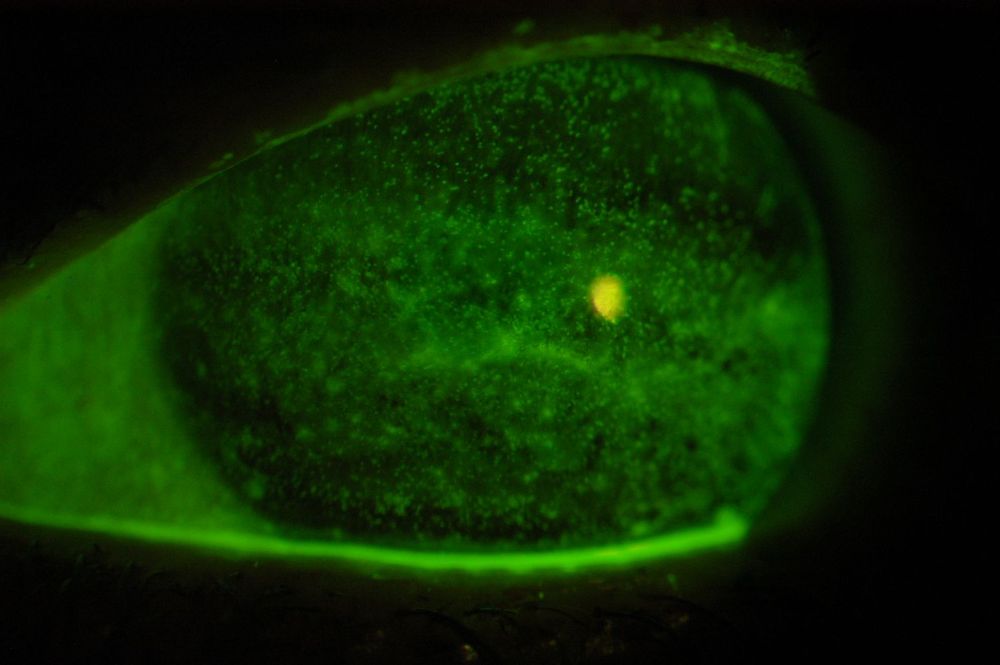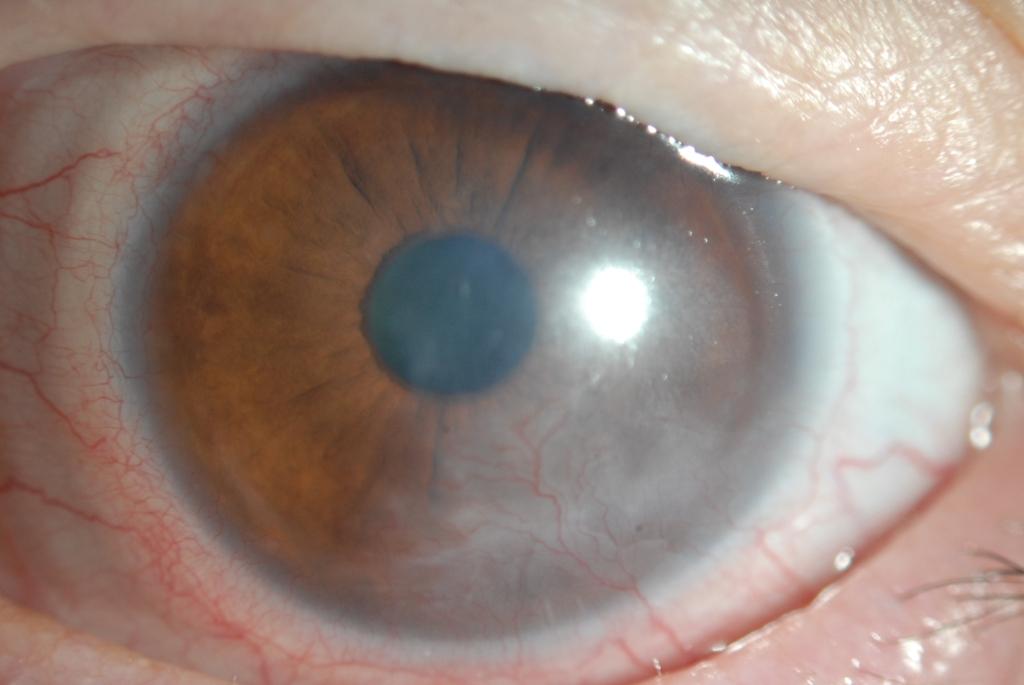Scleral lenses are widely recognized for their effectiveness in correcting keratoconus and irregular corneas, but their value extends well beyond refractive correction. These lenses are a powerful therapeutic option for managing a range of ocular surface diseases, particularly moderate to severe dry eye disease.
The unique design of scleral lenses—vaulting over the cornea and resting on the sclera—creates a fluid-filled reservoir that continuously bathes the ocular surface. This protective cushion hydrates the eye, shields it from mechanical irritation, and promotes healing. Indications include conditions such as Sjögren’s syndrome, graft-versus-host disease (Figure 1), exposure keratopathy, neurotrophic keratitis, persistent epithelial defects, limbal stem cell deficiency (Figure 2), and post-surgical or traumatic ocular surface irregularities.
By delivering sustained lubrication and mechanical protection, scleral lenses can dramatically improve comfort, visual function, and quality of life in patients with complex ocular surface disorders.
However, clinicians should be aware of specific challenges in dry eye populations. A deficient tear film may result in friction between the lens and eyelid, leading to discomfort. While many patients hope to reduce or eliminate artificial tears, some may still require lubricating drops over the lens to ease lid-lens interaction.
Another consideration is debris accumulation. Midday fogging may occur not only within the fluid reservoir but also on the front surface of the lens. This buildup, often composed of mucins and oils, can impair vision and may not respond to drops alone. In such cases, patients may need to remove and clean their lenses during the day or use techniques like “squeegeeing” the front surface with the side of the plunger while the lens is on the eye. Treatments like polyethylene glycol coatings can also help reduce surface debris.
Setting realistic expectations, providing thorough education, and preparing patients for daily management are key to successful outcomes. With proper guidance, scleral lenses can be life-changing for those struggling with severe ocular surface disease.
To explore options for your patients suffering with dry eye disease, connect with our expert team to explore fitting strategies, troubleshooting tips, and scleral lens options.
Figure 1. Example of severe keratoconjunctivitis in graft versus host disease.
Figure 2. Corneal Pannus in Stevens-Johnson syndrome



